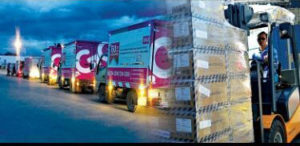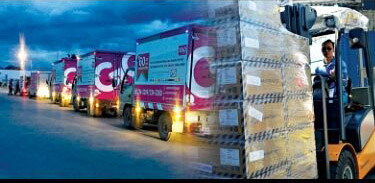
Integrated transport solutions provider 2Go Group, Inc. will be spending almost P2 billion this year on capacity and fleet expansion as it anticipates the continued growth of its businesses.
In an interview with PortCalls on the sidelines of the company’s recent stockholders’ meeting, group president and chief executive officer Sulficio Tagud, Jr. said capital expenditure for 2016 is set at P1.9 billion, to be used to re-fleet and maintain existing vessels, as well as expand warehouse facilities and increase land transport equipment.
Tagud said 2Go is constantly increasing capacity as “potential for growth is still tremendous,” and investing in more facilities will allow the group “to really move products faster.”
The 2Go chief said the volume of passengers it serves has been increasing, with an unprecedented 12% spike last year compared with the previous year. He added that volume in the first five months of 2016 also showed an increasing volume over the same period last year but did not provide details.
Tagud said this is why the group must now extend capacity “not only in the routes that we’re servicing today but bridging additional islands that we have not served yet.”
2Go has ordered two new fast craft from Australia, and will continue to add more in the coming years as part of its fleet renewal. The vessels will be used to launch services to new destinations.
Aside from fast craft, 2Go recently bought a 300 twenty-foot equivalent unit (TEU) capacity self-sustaining vessel, currently undergoing dry docking and securing permits to operate. Tagud noted at least one cargo vessel is added to its fleet every year.
The group’s current fleet has an average age of 23 years but the target is to bring this down to 20 years and below, he said.
2Go’s current fleet consists of 24 vessels having a total annual capacity of 349,000 TEUs and plying 24 routes. Tagud said utilization is 85% of the total capacity, another reason to add capacity.
The group expects “continuing growth” in the coming years as more infrastructure projects are carried out in Mindanao. One of these is the planned Mindanao-wide rail project which, when completed, would mean faster and more cost-efficient movement of cargoes in different parts of the region, Tagud said.
“With that we expect that factories will be encouraged to open up in Mindanao,” and “hopefully when that happens, there would be more balance in cargoes from north to south and south to north,” Tagud said.
Non-shipping operations
Aside from fleet expansion, the group will be expanding its non-shipping business.
It is now finalizing plans to build a central distribution center, and has identified regional centers for its forward stock locations. The regional centers, which are warehouses that are smaller than the main distribution center, will allow the company “to quickly service requirements for deliveries within the immediate vicinities,” Tagud said.
Asked if 2Go will take advantage of the recently signed Executive Order 204, which expands the Road Roll-On/Roll-Off Terminal System (RRTS) to include chassis RoRo, Tagud said it would, depending on the demand of its clients.
However, he added that since not only containers but also chassis will now be transported by vessels under the expanded RRTS, there should be bigger ships able to carry heavier loads.
Meanwhile, Tagud said the shipping and logistics sector’s wish list for the incoming administration remains the same, for government to “pay attention and invest more in port infrastructure.”
He noted that the focus should not only be on major ports but on smaller ones as well. He said improvements should be made, such as additional berthing facilities at the Manila port, expansion and addition of new ports in congested Cebu port, and more attention to the likewise congested ports of Iloilo, Bacolod, and Davao.
2Go reported a net income of P1.081 billion for 2015, a 28% increase from P842.55 million in 2014, the result of expansion of business and stringent cost management. In the first quarter of 2016, it posted a 6% increase in net income to P290.926 million from P273.633 million in the same period in 2015, as it recorded positive growth from its non-shipping businesses. – Roumina Pablo





